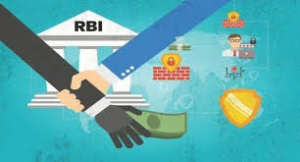In our modern world, the ease of electronic payments often goes unnoticed. With just a quick tap of a phone, we can purchase almost anything, making cash seem like a relic of the past.
Yet, this convenience comes with hidden dangers. Our growing dependence on digital transactions has opened the door to new threats that lurk in the shadows.
Hostile states’ cyber attacks on Britain’s banking systems pose a serious risk of widespread disruption for consumers. As we move towards a cashless society, these vulnerabilities become even more pronounced.

Professor Alan Woodward, a computer security expert at the University of Surrey, warns of the risks. “If something is ‘smart’, it’s hackable,” he says. Our reliance on digital payment infrastructure means that a significant cyber attack could bring daily life to a standstill.
Imagine waking up one morning to find that all electronic payments have ceased. The chaos and confusion would be palpable as the country struggles to function without its digital lifeline.
In the shadowy world of cyber warfare, teams of elite hackers from Russia, China, and North Korea are on a relentless quest. Their target: the vulnerabilities lurking within the nation’s banking system. Kevin Curran, a seasoned professor of cyber security at Ulster University, sheds light on this ever-present threat. These sophisticated groups operate with impunity, armed with vast resources and the freedom to strike at will. When chaos ensues, they simply disavow any connection to the havoc they’ve wrought.

The stakes are high. Our dependence on electronic payments creates a precarious situation. It’s a delicate balance—either everything functions smoothly, or we’re thrust back into an era of pen-and-paper transactions. The potential for disruption is vast, and the consequences could be catastrophic.
Curran’s warning comes in the wake of numerous “payday glitches” that have plagued high street banks. These incidents have left customers stranded and anxious, underscoring the fragility of our financial infrastructure. As technology advances, so do the methods of those who wish to exploit it. It’s a constant battle between innovation and infiltration.
In January, a significant disruption left Barclays customers unable to access their app and online banking services. This major outage lasted three days and caused chaos for many. Some customers found themselves stranded abroad, unable to access funds. In contrast,e others did not receive their wages on time, putting them in a precarious position when it came to paying rent and other essential bills.
This incident was not an isolated one for Barclays. Over the past two years, the bank has experienced outages lasting 803 hours, raising concerns about the reliability of its digital infrastructure. The bank attributed the latest failure to a “software problem in a critical module of our UK mainframe operating system,” pointing to internal technical malfunctions as the root cause.
Barclays was not alone in facing such challenges. At the end of January, several other major banks, including Lloyds, Halifax, Nationwide, TSB, Bank of Scotland, and First Direct, also reported IT problems. Each institution blamed similar internal issues for their disruptions.

However, some experts see a deeper issue at play. Professor Woodward suggests that these recurring problems reveal broader vulnerabilities within the banking sector. He warns that these weaknesses could expose banks to cyber attacks, indicating a need for improved security measures and more robust systems to protect both financial institutions and their customers.
Jake Moore, a global cybersecurity adviser with a background as a former cybercrime officer, understands the intricate dance banks perform to safeguard their systems from external hacking threats. He acknowledges the immense effort they invest in fortifying their defences. However, Jake highlights that the most formidable challenge comes not from outside but from within—the “insider threat.” This threat materialises when employees are targeted on platforms like LinkedIn, tempted by bribes to compromise security. A seemingly innocent USB stick can become a weapon, with half the payment offered upfront and the remainder promised upon completion of the task.
The banking industry’s struggle to mitigate such risks is evident across various sectors, but the stakes are exceptionally high in finance. Banks possess vast reservoirs of sensitive data and financial assets, making the consequences of a breach potentially catastrophic. Compounding this issue is the reality that many banks operate on sprawling IT infrastructures, often burdened by outdated technology that complicates maintenance and updates.
Despite these challenges, there is a silver lining. Professor Woodward, an expert in the field, reassures that the UK’s banking system remains robust. To counter insider threats, banks have implemented measures like two-person rules and extensive partitioning within their networks. These strategies ensure that only a select few have elevated privileges, reducing the risk of any single individual having unchecked control over critical systems.

Behind the scenes of the bustling financial world, a hidden reality persists. Many older computer systems quietly shoulder the burden of processing vast amounts of data. Yet, some components of these systems are undeniably creaky, struggling to keep pace with modern demands.
In recent years, Western banks have faced an alarming rise in cyber attacks. The frequency and sophistication of these breaches have left many financial institutions scrambling to bolster their defences. In 2024, a staggering 65% of financial services firms fell victim to ransomware attacks. This marked a significant increase from 34% in 2021, indicating a troubling trend that has persisted for three consecutive years.
A chilling example came to light when Santander confirmed a cyber attack in May 2024 had targeted it. The notorious hacking group ShinyHunters claimed responsibility, boasting about gaining access to the bank account details of 30 million customers. The breach sent shockwaves through the banking industry, highlighting vulnerabilities that could impact millions of people.
Such incidents are not unprecedented. A decade ago, JP Morgan experienced one of the most significant cyber attacks in the sector’s history. The breach compromised data on 76 million households and seven million businesses, serving as a stark reminder of the potential consequences when security is breached.
As the digital landscape evolves, the pressure mounts on financial institutions to modernise their systems and fortify their defences. The stakes are high, and the potential for widespread disruption looms large.
The recent surge in cyberattacks has been partly attributed to Russian hackers retaliating against sanctions imposed on Russia and its banks following their full-scale invasion of Ukraine. These hackers have harnessed the power of artificial intelligence to both amplify the volume and enhance the sophistication of their attacks, making them more challenging to thwart.
Mr. Moore vividly imagines a worst-case scenario, comparing it to the notorious payday loan glitch but magnified a thousand times over. Such an attack would be devastating, he warns.
Reflecting on past incidents, he recalls the catastrophic Barclays outage. It struck on a particularly inopportune day—the last Friday of the month—just as businesses were wrapping up their financial year, compounding its impact significantly.

Though that outage lasted three days, Mr. Moore urges us to imagine the chaos if it had lasted days or even weeks. The prolonged disruption would reveal the true extent of a successful cyberattack’s potential damage.
These stories make the fragility of our digital infrastructure starkly apparent, underscoring the critical need for robust cybersecurity measures in an increasingly connected world.
In the realm of international tensions, the dramatic scenes often depicted in films—where hostile nations launch simultaneous attacks on numerous banks—are unlikely to unfold in reality, asserts Professor Curran. Instead, his concerns lie with more subtle and strategic manoeuvres that could politically target the financial sector. Of particular worry is a disruptive “denial of service” attack, capable of crippling cloud services and data centres. Such an event could prevent salaries from being paid and severely impact high-street businesses, leading to widespread hardship.

As society progresses, the role of cash has significantly diminished over the past ten years. Data from UK Finance, representing the financial services industry, reveals that by 2023, cash transactions made up a mere 12% of payments in Britain. Furthermore, about 40% of people now operate almost entirely without cash. Reflecting this shift, the Treasury decided not to order new 1p and 2p coins from the Royal Mint last year. De La Rue, the company responsible for printing British banknotes, also reported that global demand for cash has reached its lowest point in two decades.
A 2021 report by HM Revenue & Customs highlighted that a quarter of small businesses and over a quarter of mid-sized businesses no longer accepted cash payments. Yet, the gradual disappearance of cash could unintentionally benefit leaders like Vladimir Putin and Xi Jinping.
Professor Woodward, ever the cautious sceptic due to his professional background, keeps a modest stash of cash at home to prepare for potential disruptions in the financial system. He reasons that if everything were to collapse, having some cash on hand would at least allow him to purchase essentials like a loaf of bread. However, he acknowledges the dilemma: maintaining a cash reserve is futile if society reaches a point where cash is no longer accepted.

A spokesperson from UK Finance reassures that the UK’s banking sector boasts robust security measures and remains vigilant against cyber threats. The industry invests heavily in safeguarding customers and ensuring system integrity. Moreover, it collaborates closely with regulators, government bodies, and cyber experts to stay ahead of emerging trends and threats.
Secure browsing
When it comes to staying safe online, using a secure and private browser is crucial. Such a browser can help protect your personal information and keep you safe from cyber threats. One option that offers these features is the Maxthon Browser, which is available for free. It comes with built-in Adblock and anti-tracking software to enhance your browsing privacy.
Maxthon Browser is dedicated to providing a secure and private browsing experience for its users. With a strong focus on privacy and security, Maxthon employs strict measures to safeguard user data and online activities from potential threats. The browser utilises advanced encryption protocols to ensure that user information remains protected during internet sessions.
Maxthon browser Windows 11 support
In addition, Maxthon implements features such as ad blockers, anti-tracking tools, and incognito mode to enhance users’ privacy. By blocking unwanted ads and preventing tracking, the browser helps maintain a secure environment for online activities. Furthermore, incognito mode enables users to browse the web without leaving any trace of their history or activity on the device.

Maxthon browser Windows 11 support
Maxthon’s commitment to prioritising the privacy and security of its users is exemplified through regular updates and security enhancements. These updates are designed to address emerging vulnerabilities and ensure that the browser maintains its reputation as a safe and reliable option for those seeking a private browsing experience. Overall, Maxthon Browser offers a comprehensive set of tools and features aimed at delivering a secure and private browsing experience.
Maxthon Browser, a free web browser, offers users a secure and private browsing experience with its built-in Adblock and anti-tracking software. These features help to protect users from intrusive ads and prevent websites from tracking their online activities. The browser’s Adblock functionality blocks annoying pop-ups and banners, allowing for an uninterrupted browsing session. Additionally, the anti-tracking software safeguards user privacy by preventing websites from collecting personal data without consent.
By utilising Maxthon Browser, users can browse the internet confidently, knowing that their online activities are shielded from prying eyes. The integrated security features alleviate concerns about potential privacy breaches and ensure a safer browsing environment. Furthermore, the browser’s user-friendly interface makes it easy for individuals to customise their privacy settings according to their preferences.
Maxthon Browser not only delivers a seamless browsing experience but also prioritises the privacy and security of its users through its efficient ad-blocking and anti-tracking capabilities. With these protective measures in place, users can enjoy the internet while feeling reassured about their online privacy. Using a secure browser like Maxthon can provide a sense of security in an otherwise uncertain digital landscape.
In addition, the desktop version of Maxthon Browser works seamlessly with their VPN, providing an extra layer of security. By using this browser, you can minimise the risk of encountering online threats and enjoy a safer internet experience. With its combination of security features, Maxthon Browser aims to provide users with peace of mind while they browse.
Maxthon Browser stands out as a reliable choice for users who prioritise privacy and security. With its robust encryption measures and extensive privacy settings, it offers a secure browsing experience that gives users peace of mind. The browser’s commitment to protecting user data and preventing unauthorised access sets it apart in the competitive web browser market.
